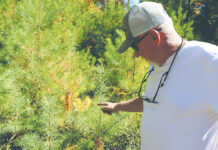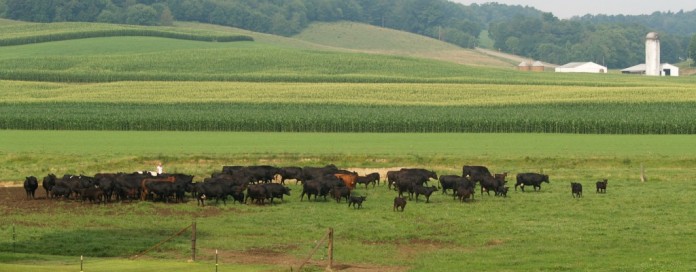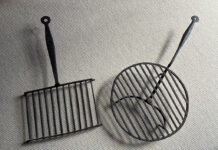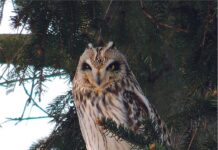The first time I was introduced to the forage Eragrostis tef (common name Teff grass), I was in the front row of Dr. Gary Bates’ class in the Ellington Plant Sciences building at the University of Tennessee.
Dr. Bates is the forage specialist for UT Extension and the director of the UT Beef and Forage Center.
He is a well-regarded teacher, researcher, and writer. As one of my many influential mentors, I take his opinions to heart and still remember what he had to say about Teff grass.
He said, “Teff grass is one of those grasses that you just want to roll around naked in.”
A point that would be hard to argue with, since one of its common names is “Lovegrass” and the origin of the word “Teff” is the Ethio-Semitic word for “lost”.
Which, seems to be justification enough for Bates’ opinion if you put two and two together.
Teff grass
A sward of Teff grass is a beautiful green sea of soft textured forage. Ideal for animals to eat and not a bad place for a “picnic” either.
It’s hard not to love.
Teff grass originates from Ethiopia. It is a warm-season annual grass that can be used for hay, silage, or pasture.
It is fast growing, high yielding, and a forage of excellent quality. It can be fed to horses, sheep, dairy and beef cattle.
Teff can be used to boost summer production, tolerate drought, persist through waterlogged conditions, as a green manure, a double crop for cereal grains, or to aid in the rotation between newly seeded permanent pastures.
Temperature
The greatest challenge producers will encounter is initially planting it. Soil temperature is critical and must be above 65 degrees Fahrenheit.
Teff cannot tolerate frost, so planting too early can be detrimental to a germinated stand and the stand will die out after the fall’s first frost.
No need to fear if animals are grazing when frost comes through, because unlike some other warm-season annuals, Teff does not have issues with prussic acid accumulation after frost.
Seeding
Seed bed preparation is another crucial step. Teff grass seed is very tiny, so a firm seed bed must be provided. Tillage and cultipacking are recommended.
Controlling weeds prior to planting is also part of the process, because the early part of seedling development is dedicated to root growth, not shoot growth.
The typical seeding rate for Teff is five to seven pounds per acre.
One of the benefits of Teff is that fertility needs are comparably low to other annual forages. Typical fertilizer application is about 60 pounds of nitrogen per acre at planting and 30-60 pounds after first cutting. Ideal pH for Teff is 6.0-6.5.
Hay
Hay production is the most common use for Teff. It should be harvested before going to seed and at heights of about 15 inches. Remaining stubble should be 4-5 inches.
In years of adequate rainfall, two to three harvests can be completed in the growing season.
Due to the fine texture of the stems, Teff grass dries faster than other annuals and should be baled at 20 percent moisture for square bales and 18 percent for round bales.
Grazing can be done successfully by multiple species, but pasture managers need to be observant of the pasture condition. Especially, early in the growing season.
Tender seedlings can be pulled out of the ground or trampled if over-grazed.
Farm Science Review
If Teff grass sounds like an intriguing option for your forage system, OSU Extension invites you to come out and see a stand for yourself.
Teff grass will be one of the forages planted at the Gwynne Conservation Area and on display during Farm Science Review Sept. 18-20.
Forage and grazing talks will be offered throughout the day and personnel will be nearby to answer producer questions.
If you are curious about testing Dr. Bates’ statement, we do ask that all of the visitors keep their clothes on and refrain from rolling around in the forage demonstration plots.
We encourage you to try that once your stand is established at home.
Additional information about Teff grass can be gathered for you through your local Extension office.












